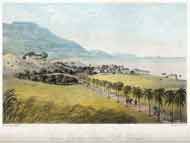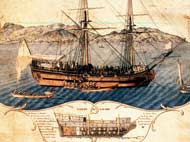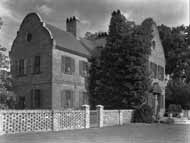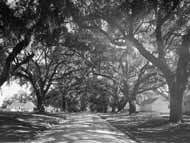The Economics of Rice
The early economic development of the Lowcountry focused on the Native American deer skin trade, cattle ranching, and naval stores production (tar, pitch, and lumber) — industries that required little capital investment and a small labor force. These products generated large fortunes and brought a great deal of capital into the new colony.
Many of the earliest Carolina settlers were from the West Indian colonies. These settlers hoped Carolina would provide them with the means to improve socially and economically just as the West Indies had done for their fathers and grandfathers. The better-financed settlers were not only interested in getting rich, they wished to recreate the lifestyle of Great Britain’s landed gentry. They came to the new colony looking for land, a fresh start, and a “get rich quick” crop that would generate wealth in Carolina the way tobacco had in Virginia and sugar cane in the West Indies.
Between 1695 and 1715 that “get rich” crop became rice. When and how rice was introduced into the Carolina colony is the subject of legend and folklore. There are historical accounts that suggest rice arrived on a ship from Madagascar and was given to a local planter as a present. Recently scholars studying the history of rice in both Carolina and Africa suggest that rice arrived in Carolina on slave ships as leftover provisions taken on board in Africa to feed captives during the Middle Passage. While we may never know exactly when rice arrived, we do know that it was the most important commercial crop in the Lowcountry from 1695 until 1865.
Nearly all of the rice grown in the Lowcountry in the 18th century was exported to northern Europe. From 1700 until 1730 Carolina rice could only be exported to Great Britain and her colonies. British middlemen then shipped the rice to other European countries. When this restriction was lifted in 1730, vast new markets opened to Carolina’s planters and the scramble for land and slaves intensified.
| Rice Exports | |
|---|---|
| 1700 | 12,000 lbs of rice |
| 1730 | 18,000,000 lbs of rice |
| 1740 | 30,000,000 lbs of rice |
| 1770 | 81,000,000 lbs of rice |
Some of the colony’s first successful rice plantations were located along the Ashley River. Middleton Place, Magnolia, Drayton Hall, and many others were all established during this period. When rice prices and production stagnated between 1740 and 1760, indigo made up for the drop in collective Carolina income. When rice bounced back between 1766 and 1775, production rose to nearly 66 million pounds and prices were higher than at any other time in the Colony’s history.
From 1780 until 1790, rice production throughout the Lowcountry was affected by the turmoil of the American Revolution. Production dropped sharply. Only 24,000 barrels of rice were shipped from Charleston in 1783, the year the Revolution ended. When production began to return to pre-War levels in the 1790s, the means of production and the locations of the most successful plantations had changed significantly. The largest plantations were no longer located along the Ashley River. Instead, production had moved to tidal-driven marshlands such as those on the Waccamaw Neck near Georgetown and along the Combahee River south of Charleston. Commercial rice production in South Carolina came to an end after the Civil War.
“…for a long time the Ashley River plantations were the most highly appreciated & productive lands in the colony. Now these lands are almost left untilled, are rarely inhabited by the proprietors…& the whole presents a melancholy scene of abandonment, desolation, & ruin…”
Edmund Ruffin 1843






